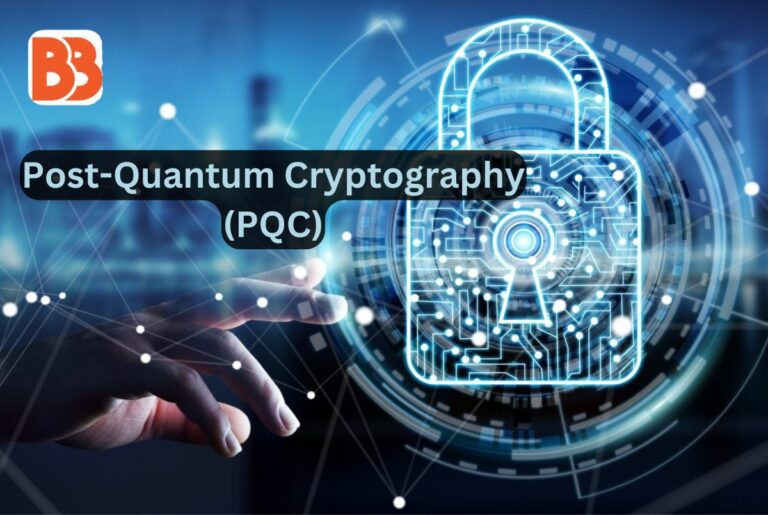One of the most critical advancements is Post-Quantum Cryptography (PQC), a framework designed to safeguard digital communications against the potential threats posed by quantum computers. As we stand on the brink of a technological revolution driven by quantum computing, the importance of robust cybersecurity measures has never been greater. Let’s have a glance at this guide to explore what PQC is, why it’s essential, its key components, and its implications for the future of cybersecurity.
What is Post-Quantum Cryptography?
Post-Quantum Cryptography refers to cryptographic algorithms that are believed to be secure against the capabilities of quantum computers. Unlike classical computers, which process information in bits (0s and 1s), quantum computers leverage quantum bits (qubits) that can exist in multiple states simultaneously. This unique property allows quantum computers to perform complex calculations at speeds unimaginable for classical computers, making them potentially capable of breaking widely used cryptographic systems, such as RSA and ECC (Elliptic Curve Cryptography).
Why is PQC Important?
Quantum Threats
The arrival of functional quantum computers poses a significant risk to existing encryption methods. Algorithms that protect sensitive data today may become obsolete once quantum computers reach a certain level of sophistication. For instance, Shor’s algorithm enables quantum computers to factor large numbers exponentially faster than classical computers, threatening RSA encryption directly.
Data Longevity
Data that is encrypted today could remain sensitive for many years, even decades. If quantum computers become accessible in the future, any data encrypted with classical algorithms could be compromised. This reality underlines the necessity for Post-Quantum Cryptography (PQC) to ensure long-term data security.
Regulatory Compliance
With the increasing emphasis on data privacy regulations, organizations must adapt their security measures. Implementing PQC can help businesses comply with emerging standards aimed at protecting sensitive information from quantum threats.
Key Components of PQC
- Lattice-Based Cryptography: This approach relies on mathematical structures called lattices, which are believed to be resistant to quantum attacks. Lattice-based schemes are already showing promise in several PQC initiatives.
- Code-Based Cryptography: Leveraging error-correcting codes, code-based cryptography is another leading candidate for PQC. These systems are well-studied and have been around for decades, making them a strong contender against quantum threats.
- Multivariate Polynomial Cryptography: This method uses systems of multivariate polynomial equations, which are difficult for both classical and quantum computers to solve efficiently. This complexity makes it a viable option for Post-Quantum Cryptography (PQC).
- Supersingular Isogeny-Based Cryptography: Though still in the experimental stage, this approach involves complex mathematical structures and has shown potential for developing secure encryption methods resistant to quantum attacks.
Implementing PQC
Standardization Efforts
The National Institute of Standards and Technology (NIST) is leading efforts to standardize PQC algorithms. After several rounds of evaluation, NIST is expected to announce the final algorithms by 2024. This standardization will guide organizations in choosing robust cryptographic systems that can withstand quantum threats.
Transition Strategies
Organizations must develop clear strategies for transitioning from classical cryptographic systems to PQC. This includes assessing current vulnerabilities, understanding the implications of Post-Quantum Cryptography (PQC) integration, and training personnel to manage new cryptographic frameworks.
Continual Research
The field of PQC is dynamic, with ongoing research aimed at improving existing algorithms and developing new ones. Staying informed about the latest advancements is essential for organizations looking to fortify their cybersecurity posture against quantum threats.
Challenges in Adopting PQC
Performance Overheads
One significant challenge in implementing PQC is the potential performance overhead. Many PQC algorithms require more computational resources compared to classical algorithms, which could impact system efficiency, particularly in resource-constrained environments.
Legacy Systems Integration
Organizations with established systems may face challenges integrating PQC algorithms into their existing infrastructure. Moreover, ensuring compatibility without compromising security is crucial for a smooth transition.
Lack of Awareness
There is still a lack of awareness and understanding of PQC among businesses and organizations. Education and training will be essential to prepare cybersecurity professionals for the transition to quantum-resistant encryption methods.
Future Outlook of PQC
As quantum computing technology continues to advance, the implementation of PQC will become increasingly critical. Additionally organizations that begin preparing now will be better positioned to protect their sensitive data in a post-quantum world. Continued collaboration between researchers, industry leaders, and regulatory bodies will be necessary to develop robust standards and best practices for PQC adoption.
Conclusion
As quantum computing continues to evolve, the urgency for adopting Post-Quantum Cryptography grows. By understanding the principles of PQC and its significance in securing digital communications, organizations can take proactive steps to safeguard their data against future quantum threats. Preparing for a quantum-enabled future requires investment in PQC now, ensuring that sensitive information remains secure for years to come.
Read More:
The Role of Green Hydrogen in Developing a Circular Economy
